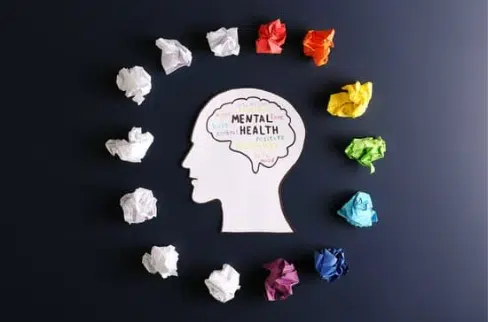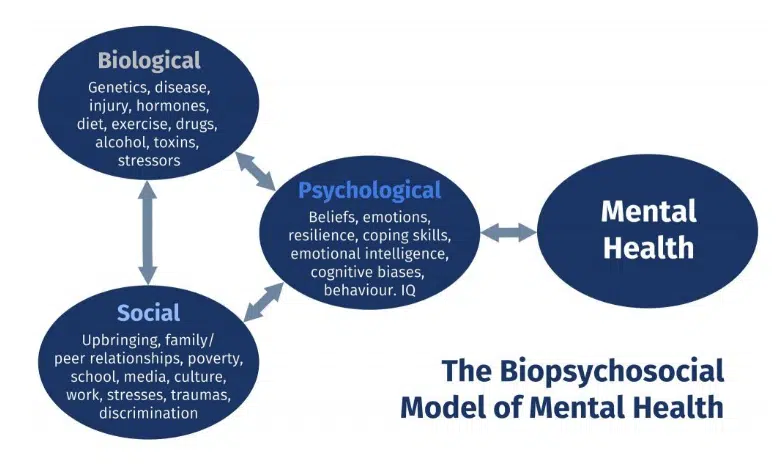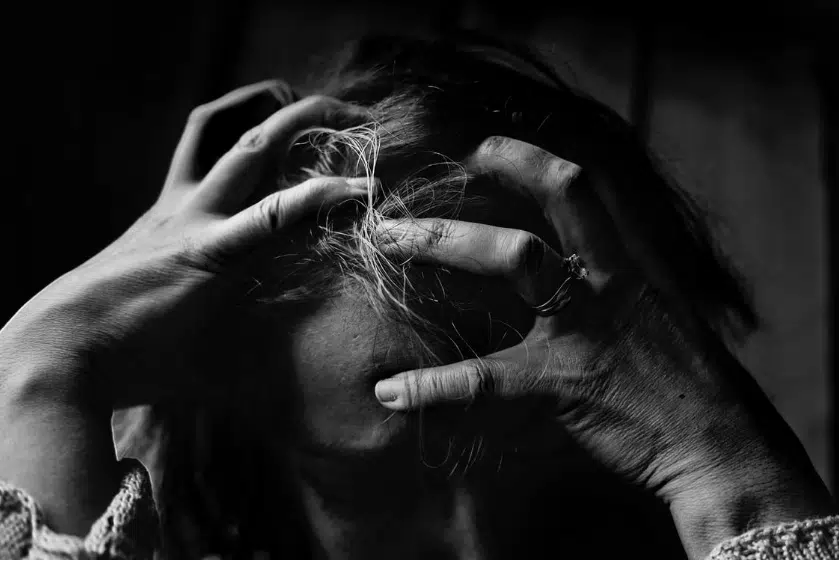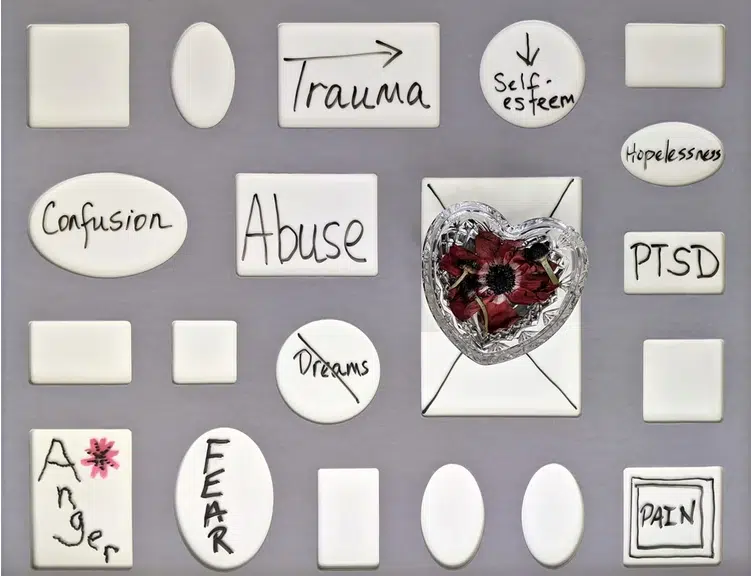Trigger warning: suicide, suicidal ideation, sexual abuse

A famous Dutch artist named Vincent Van Gogh once famously said, “…and then, I have nature and art and poetry, and if that is not enough, what is enough?”. And on the 27th of July 1890, Van Gogh completed suicide and died two days after, with his brother Theo at his bedside.
More than a century after the artist’s death, suicide is more prevalent than ever. In fact, around 700,000 people die from suicide annually.
This means that one person dies from suicide every 40 seconds. This data still do not include the number of people who have attempted suicide, which is more than those who completed it.
There is so much stigma around suicide and mental health, and talking about it has even become a taboo in most societies. But removing the stigma around suicide and mental health can actually augment the statistics and improve the general mental health of the population.
Before delving into the many facets of suicide and suicidal ideation, it’s first important to have a clear grasp of the factors that affect a person’s mental health.
What is mental health?

According to the World Health Organization, mental health is not just the absence of any mental health conditions (e.g, depression, anxiety, eating disorder, etc.) but is a person’s state of well-being.
Everyone has a state of mental health and it normally fluctuates throughout a person’s entire life span.
Mental health is NOT the same as mental illness. The former involves life satisfaction, self-acceptance, purpose, a sense of connection and belongingness, empowerment, and resilience. Its strict definition is:1
“A state of well-being in which the individual realizes his or her own abilities, can cope with the normal stresses of life, can work productively and fruitfully, and is able to make a contribution to his or her community.”
Given this, an important question arises: what influences mental health and what are the factors that lead to mental health illnesses?
One of the most famous models that explain mental health is called the Biophysical Model of Mental Health; this comprehensive model includes social and psychological determinants of health and a person’s biology.
This model is hooked on the premise that mental health illnesses can be looked at the same way as any physical illnesses, but just a tad bit more complicated.
What is the Biophysical Model of Mental Health?

The Biophysical Model of Mental Health was first proposed as a medical model by Engel in 1977 to explain psychiatric disorders, and it is one of the most acceptable models out there.
The beauty of the model is that it gives a holistic approach to mental health illnesses.2
The model is very easy to understand as it involves only three factors, which are:
- Biological Influences on Health – This factor covers a person’s genetic makeup, history of physical trauma or infection, and disorders that have inherited genetic vulnerability.
A person’s physical health also plays a role under biological influences.
- Psychological Influences on Health – A person’s psychological foundation significantly affects their mental health and also their vulnerability to mental health illnesses.
This involves a person’s coping skills, social skills, self-esteem, temperament, and even emotional intelligence and IQ.
- Social Influences on Health – Social influences also cover cultural factors. This factor is one of the most overlooked domains in the model, and it’s also one of the hardest ones to manage.
It includes socioeconomic status, culture, technology, educational attainment, and religion, among many others. Furthermore, it takes into consideration stressful events, such as losing a job or breaking up with a partner, that may impact a person’s mental health.
All of these three things combined form the person’s mental health. This explains why people who are going through a divorce also often suffer from depression or people with low self-esteem suffer from social anxiety.
The interrelation of these three factors leads to a given outcome, but one component alone is not enough to lead to illness.
If most of the factors are negative then it will most likely lead to the development of a mental illness.
What are suicide, suicide attempt, and suicidal ideation?

In a nutshell, suicide is death caused by harming oneself with the intention to die.
People often use the term “completed suicide” when a person died from suicide and “suicide attempt” when a person tried to commit suicide but they do not die from it.
Suicide, suicidal attempts, and suicidal ideation occur across all age, economic, social, racial, and ethnic boundaries. But before there is suicide and/or suicide attempt, there is always first suicidal ideation or more commonly known as suicidal thoughts or ideas.
Suicidal ideation is a comprehensive term that is used to describe contemplations, wishes, and preoccupations or even planning with death and suicide.3
Suicidal ideation usually comes and goes or increases or decreases in intensity, but it is still always safer to seek help whenever you feel and/or see the first signs (e.g feeling hopeless, losing purpose, isolated from friends, etc.) of it.
As the adage goes: prevention is better than cure.
Suicide and suicide attempts have serious emotional, physical, and economic effects on the person who attempted and the people around them. Fortunately, 9 out of 10 people who attempt suicide will not be able to complete it.
In a literature review that summarised over 90 studies that have followed people who attempted suicide that resulted in medical care, it was seen that approximately 7% completed suicide, approximately 23% reattempted non-fatally, and 70% had no further attempts.
What is assisted suicide and is it legal?

Assisted suicide is an extremely controversial and much-debated topic in almost every country.
It is the act of intentionally assisting a person to kill themselves with informed consent in order to relieve them from their suffering, which is why it’s often seen as a form of euthanasia in some places.
Assisted suicide, however, is not the same as euthanasia since the latter involves active steps to end someone’s life. Assisted suicide is often called physician-assisted suicide or PAS.
It is a complex process where a doctor weighs various factors, and if the doctor believes that PAS is the only way then they may provide a drug to the patient that they can take to end their life. But up until the very end, it is up to the patient whether they will take the drug or not.4
As of June 2021, PAS is legal in 10 states in the USA with different rules, processes, and regulations. Outside of the USA, there are 10 more countries globally where PAS is legal with different requirements and procedures, as well.
What are the most common mental illnesses that increase a person’s risk of suicide?

The issues of mental health, mental illness, and suicide are very complex. As seen in the biophysical model of health, different factors can affect a person’s mental health that may lead to these mental illnesses and suicidal ideation.
Severe depression is the most common factor that influences a person’s decision to commit suicide. Depression is a type of mood disorder where a person experiences persistent feelings of sadness and hopelessness and loses interest in hobbies and activities they once enjoyed.
It causes the individual significant distress or impairment in social, occupational, and other important areas of their where they need to function.
According to the Depression DSM-5 Diagnostic Criteria, a person must experience five or more symptoms for a two-week period and at least one of the symptoms should either be a depressed mood or loss of interest or pleasure.
The following symptoms are:
- Depressed mood – for children and adolescents, this can manifest as an irritable mood.
- Loss of interest or pleasure in almost all activities
- Significant (more than 5% in a month) unintentional weight loss/gain or decrease/increase in appetite – For children, it can be a failure to make expected weight gains.
- Sleep disturbance (insomnia or hypersomnia)
- Psychomotor changes are severe enough to be observed by others, such as agitation or retardation.
- Tiredness, fatigue, low energy, or decreased efficiency in which routine tasks are completed
- A sense of worthlessness or excessive, inappropriate, or delusional guilt
- Impaired ability to think, concentrate, or make decisions
- Recurrent thoughts of death, suicidal ideation, and suicidal attempts
Depression is present in almost half of the completed suicide cases, according to the American Foundation for Suicide Prevention.
Other mental illnesses that increase a person’s risk and vulnerability to suicide are Bipolar Disorder, Borderline Personality Disorder (BPD), Eating Disorders, and Schizophrenia.5
What are the other factors that make a person vulnerable to suicide and suicidal ideation?

Not all people who complete suicide are clinically diagnosed with a mental illness. There are those people who went through traumatic events or are placed in precarious circumstances which have led them to start having suicidal ideations or attempting suicide.
Other factors that may lead to suicide are:6
- Traumatic stress – Stresses may include sexual harassment, sexual abuse, emotional abuse, physical abuse, or even war and conflict trauma.
- Substance use and impulsivity – People who are already having suicidal ideation can significantly be influenced by drugs and alcohol. These substances may lead to more impulsivity to act upon their suicidal ideation than they would be when sober.
- Loss or Fear of loss – People who experience loss or perceived loss can have various responses to it. Some heal by incorporating healthy coping mechanisms, while other people spiral down the black hole of mental illness.
Situations under this can include academic failure, being arrested, death of a loved one, end of a romantic relationship, and loss of social status, amongst many others. - Hopelessness – Hopelessness, one of the symptoms of depression, has been found to crucially influence a person’s decision to commit suicide. A person may feel hopeless when they are faced with a social or physical challenge that they see no way out of the outside of death.
- Chronic Pain and illnesses – Chronic pail or illnesses with no hope of cure or reprieve can push a person to suicide just to end the physical suffering. More often than not, they also need physical assistance from others to do daily tasks which makes them feel like they are a burden to other people.
These circumstances make them believe that their loved ones or caretakers are better off without them. Moreover, these can also bring about anxiety and depression, which can further increase a person’s risk of suicide. - Social isolation – Social isolation can be rooted in multiple events such as losing a loved one, going through a divorce, suffering from a physical or mental illness, retirement, and others.
As mentioned under the psychological influences, a person’s self-esteem may also cause them to have social anxiety or make them isolate themselves from others.
How would I know if my loved one is having suicidal ideation?

In order to prevent something, we must first learn to recognize the signs. For some people, it’s very evident when their mental health is dipping as their whole mood and personality instantly change for the worse.
On the other hand, there are people who are better at hiding their true emotions in order to not burden other people.
Here’s a list of signs to look out for to gauge whether a person is having suicidal ideation, and take note that most of these can be expressed subtly or in a joking matter:
- Expressing in words or actions that they have no reason to live, feel worthless and hopeless, see no future, feel trapped with their life and they see no way out, pray to disappear or die, etc.
- Social isolation even with close friends and family
- A sudden increase in depressed mood
- Expressing, either subtly as a joke or directly, that they are a burden to others and people will be better off without them
- Looking for ways to kill themselves like asking for methods or acquiring weapons
- Dark jokes about death, suicide, or self-harm
- Life-threatening behaviour includes engaging in risky activities, self-injurious behaviour, or even stopping life-saving medical treatments
- Other obvious signs are: rage, anger, seeking revenge, anxiety, agitation, random substance use and abuse, significant change in the level of religiousness or interest in the afterlife, or any dramatic change in mood, appearance, or behaviour
One of the biggest red flags to detect that one is at the end of their rope is when they are already setting their affairs in order.
This is the calm before the storm– when they are at peace in knowing that they will be gone soon. Once a person is already giving away their prized possessions, asking others to take care of their loved ones or pets, and contacting people for forgiveness, goodbyes, or gratitude and love, act immediately!
What can I do when I know my friend is having suicidal ideation?

Now that you know the signs and you come to the unfortunate situation where you’re seeing it, the next logical question is: what should we do to help the person?
The most important thing to remember is to not be afraid to talk about suicide. Talking about it openly further eliminates the taboo surrounding it, which consequently creates a safer environment for people to seek help from loved ones and/or mental health professionals without the added shame or guilt.
Furthermore, talking about suicide does not actually worsen a person’s suicidal ideation; on the contrary, it reduces the person’s anxiety and makes them feel understood.
If you see the warning signs from anyone in your circle, here are the important things to do:7,8
- Talk to them about it, and listen with an open heart and mind. But always be mindful to never open wounds that you cannot close.
- When talking to a person about their mental state, refrain from doing it in a public space where there are other people nearby. Find an appropriate time and quiet place where the person will feel safer to open up.
- Encourage and help the person to seek professional help.
- Assess the situation and the level of the person’s suicidal ideation. Determining the severity of the situation will guide you in the actions steps you need to take.
Here are the following questions you may ask to help you: have you decided how you will complete suicide? Have you decided when you would do it? Have you taken any steps to secure the things you need to carry out your plan? Have you attempted suicide in the past? - If all questions are answered with a concise response, then you should consider the situation as high risk; however, the lack of a plan does not also mean that safety is ensured.
Always remember that all thoughts of suicide, regardless of the level of ideation, should be taken seriously. - Once you have assessed the level of suicide risk, NEVER leave them on their own. If you are far away from them, you can message or call them regularly every day or ask their parents to check up on them from time to time.
You may also ask other people with whom they are close to keep in touch with her regularly. - Aside from having constant communication with them, always make sure that you know their location and their emergency contact number.
- If you are with them, remove any items that can be used to harm themselves. This includes knives, medications, rope, sharp objects, and any other objects you think can be used for suicide.
- Sometimes people are afraid to disclose the situation to their family members, especially if they are coming from a dysfunctional family; however, if the risk is high then it is important to collaborate and inform the family immediately.
It’s better to help as a group than as an individual. But if they refuse to involve other people, you may reach out to a professional for guidance. - Never agree to keep their suicidal ideation or plans a secret, because you would need to eventually when matters become worse.
If all else fails, don’t be afraid to take them to the nearest hospital where they can keep her safe, with a help of a professional, until her suicidal ideation calms down.
A suicidal crisis can last from a few hours to days, so always maintain contact even after the crisis.
What should I do if I am having suicidal ideation or am planning to attempt suicide?

When you are in deep and paralyzing emotional pain, it may seem endless and overwhelming.
Aside from regularly seeking treatment from a mental health professional or talking to loved ones for support, there are other things you can do when you find yourself in a suicidal crisis:9
- First, remind yourself that you are not alone in this journey and there are other people like you who are on the same spot. Feeling suicidal does not, in any way, make you weak, crazy, or flawed.
It just means that you are going through something or are mentally ill, and there is nothing wrong with having a mental illness. - Talk to a professional who can help you see healthier solutions than suicide. The majority of the people who are suicidal feel like it is the only possible option, but there are other options to get through it like therapy or talking to loved ones.
- Make a promise to yourself or to other people that you will not do anything harmful to yourself at the moment of crisis. It’s important to put a distance between your thoughts and actions.
Suicide is an action and nobody will ever push you to do it, so give your thoughts some time, as much as you can afford, and seek help from the time being. - Avoid drugs and alcohol as they can make you do impulsive decisions.
- Make your home your safe space. This can range from removing objects that you can use to hurt yourself or distancing yourself from people that are making your mental state worse.
- Even if you are scared or embarrassed with your feelings and thoughts, try talking to a person you trust and let them know the gravity of what you are going through.
If they do not understand, try another person. Talking about it can help alleviate the pain, and receiving support can also help you with your feelings of hopelessness and worthlessness.
You may also message your therapist or call a suicide hotline if you really do not trust anyone to know about what you are going through. - If you find yourself all alone at the peak of the crisis, try doing all of these things: distraction (e.g, walking, journaling, cleaning, drawing, etc.), breathing exercises, guided imagery, grounding, progressive muscle, butterfly hug.
There are many videos and articles on how to do it online, and continue doing it until you feel better. Don’t forget to congratulate yourself for every minute that passes that you didn’t hurt yourself!
Again, as much as emotional pain feels permanent always remember that suicide can always be prevented. Always remember that people are happy that you are alive, and there are always people who are more than willing to support you throughout your mental health journey.
What sectors have a high risk of attempting and completing suicide?

It is true that suicide that everyone can experience suicide risk, but people who are socially and/or socially vulnerable and/or constantly live with discrimination, and fear, and are in survival mode have a higher suicide risk as compared to other people.
Here are the major groups that are at high risk of suicide, according to the Suicide Worldwide in 2019 Global Health Estimates of the World Health Organisation:
LGBT Members. According to the Journal of Homosexuality published in 2011, which summarised and reviewed multiple research findings, studies have consistently established that there is a strong indication of heightened suicidal risk behaviours among LGBT members.
The statistics on suicide attempts among LGBT members vary from one person to another; however, a journal that used Meyer’s minority stress theory suggests that the stigma, prejudice, and discrimination (minority stress) consistently experienced by sexual minorities are responsible for higher rates of mental health issues within the population.
The theory’s model’s stress process includes experiencing prejudiced events, expectations of rejection, hiding and concealing true self, internalised homophobia, and constructive coping processes.
In addition to suicide, the minority stress makes them more vulnerable to other mental health problems such as substance use disorders, affective disorders, and other mental health disorders.
Youth. According to the World Health Organisation, suicide is the fourth leading cause of death among 15-19 year-olds worldwide.
Furthermore, 1 in 7 (14%) 10-19-year-olds globally experience a mental disorder, and people within this age group are specifically susceptible to social exclusion, discrimination, stigma which affects ease to seek help, educational difficulties, risk-taking behaviours, physical ill-health, and other forms of human rights violations.
Youth’s exposure to the hostile and dangerous social and physical environment also comes into play; youth who experience any form and degree of poverty, abuse, or violence can make them more at risk for mental health problems.
Anxiety disorder is found to be the most common emotional disorder among this age group, especially among older adolescents.
In fact, 3.6% of 10-14 year-olds and 4.6% of 15-19 year-olds experience anxiety disorder at some point. Depression, on the other hand, occurs among 1.1% of adolescents (10-14 years old) and 2.8% of teenagers (15-19 years old).10
Low- to middle-income individuals. In a 2019 report, 77% of people who completed suicide are from low- and middle-income countries.
A comprehensive and systematic study that analysed and reviewed other multiple literature and studies on suicide and poverty, revealed the growing number of literature that documents the relationship between suicide and socio-economic variables– poverty, financial crisis, indebtedness, unemployment, and others.
Durkheim himself, one of the most notable sociologists who combined empirical data with sociology, has theorized that economic equality significantly acts as a prevention against suicide.11
According to the Suicide Rate by Country 2022, the top ten countries with the highest suicide rate in 2019 are Lesotho, Guyana, Eswatini, South Korea, Kiribati, Federal States of Micronesia, Lithuania, Suriname, Russia, and South Africa.
Out of these top 10 countries, 2 are considered as least developed countries, 6 are developing, and 3 are developed.
Racial and ethnic minorities. There are high cases of suicide among racial and ethnic minorities; however, what is known about it is still limited due to underreporting and limitations in data collection.
According to an article, research findings have reported that experiencing racial discrimination is extremely painful that is linked to the ability to die due to suicide.
Suicide rates and their leading factor defer from ethnic group to ethnic group. In Australia and New Zealand, there are higher rates of suicide among aboriginal people than colonists.
In America, Native Americans are 50% more likely to attempt/complete suicide than the White population. In terms of women minority groups in the USA, East Asian American women have the highest suicide rates of all women over the age of 65.
Furthermore, young Hispanic Americans are significantly more vulnerable to suicide. Racial and ethnic discrimination is significantly worsening throughout the years, which would lead to higher rates of suicide among the population.12
How to cope when you lose a loved one to suicide?

Losing a loved one due to any reason is always hard and painful. Losing someone to suicide, however, is more complicated since grief often comes with shock, denial, and guilt.
People who lose someone from suicide have the tendency to blame themselves for not seeing the signs, not being there, or for not preventing it.
On top of this, people also feel suffer from stigma and isolation; this makes it harder for them to talk about their lost loved ones and go through the process of grief naturally.
If you have lost someone to suicide, always remember that it is not your fault or anyone else’s.
People who have attempted or completed suicide never did it with the intention of hurting others; rather, their mental illness or poor mental state has made them think that it’s the only way to stop excruciating pain.
Aside from not putting the blame on yourself, you should not also judge or blame the person who has attempted or completed suicide; they are just mere victims of their own poor circumstances or mental illness.13
Just like losing someone to another cause, you will never get over the loss but you will surely get through it. By incorporating healthy coping mechanisms, you can learn that moving on doesn’t mean that you’re erasing the memory of the person.
You will and you can survive this.
Here are some healthy ways to cope with grief and loss:14
- Constantly reach out to friends and family and seek support from professionals. Never isolate yourself from other people as this may lead to your own mental health downfall.
- Be patient and heal at your own pace. Nobody grieves a loss of a loved one in a day. You will experience different stages of grief, and always remember that this is cyclical and not linear. But despite this, always remember that you are getting better each day.
- Stay present and grounded. Take it one day at a time, and if that seems too overwhelming then just take it one minute at a time. You can call your best friend, try journaling to pour out your emotions or learn mindfulness or other relaxations and grounding techniques like deep breathing, body tapping, etc.
- Express yourself. Acknowledge the pain and emotion, because bottling it up will just worsen it and delay the inevitable. Talk to a professional or a trusted friend and express what you are truly feeling.
- Allow yourself to have fun. Just because you lost someone, doesn’t mean you’re no longer allowed to laugh and be happy. Go out with people and do activities that excite and make you feel alive.
- Establish routine. Building a routine can help you get through each day easier, especially when you have a lot of responsibilities. It also will give you a sense of normalcy.
- Take care of yourself. Focus on yourself, especially when you’re grieving. Eat regularly, move your body as much as you can, do activities that make you happy, and avoid any alcohol and illegal substances.
HELP HOTLINES
If you are experiencing any suicidal ideations or any symptoms of mental illness, do not hesitate to seek help from a mental health professional.
If you are going through a crisis, you may call the following suicide hotlines:
USA – 1-800-273-8255 (available 24/7)
UK – 0800 689 5652 (available from 6 PM to 3:30 AM)
You may also access a comprehensive list of suicide crisis lines on this website.
Alternatively, you can also talk and seek support from your friends and follow the list of things to do when you are feeling suicidal.























